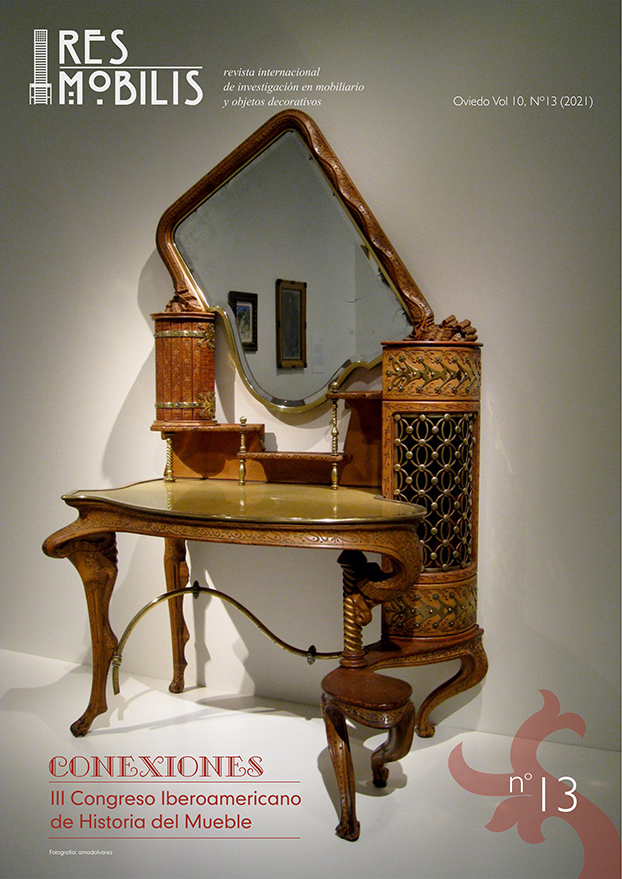Abstract
During the 19th century, European bourgeois etiquette guided the means of social interaction, entering the domestic universe and prescribing personal behaviour, especially for women. Resting furniture reflected the female body in particular and projected their bodies in these environments: beautiful, objectified and inert, like a sleeping beauty. What were these items of furniture like, which styles were privileged, what bodily positions did they determine and what images of women did they project?
Through analysing 19th century resting furniture in brazilian museum collections and in images from the period produced by artists in Brazil, as well as in literary studies, the intention is to develop a study which perceives the connection between furniture and gender, allowing a greater understanding of how bourgeois women's places were constructed in Brazil – a type of beauty which remains radiant due to its long latent period.
References
Almeida, Julia Lopes de. Livro das noivas. Rio de Janeiro: Typografia da Companhia Nacional, 1896.
Alves, Castro. “Adormecida”. In Espumas flutuantes: 68-69. São Paulo: Klick, s.d.
Assis, Machado de. Dom Casmurro. Rio de Janeiro: Editora Globo, 1997.
Azevedo, Álvares de. Lira dos vinte anos. São Paulo: Martins Fontes, 1996.
Basile, Gimbatista. “Sun, Moon and Talia.” In The great fairy tale tradition: from Straparola and Basile to the Brothers Grimm, edited by Jack Zipes: 685-687. New York: W. W. Norton, 200.
Beauvoir, Simone de. O Segundo Sexo: fatos e mitos e a experiência vivida. Rio de Janeiro: Difusão Europeia do Livro, 1963.
Benjamin, Walter. “O interior, o rastro.” In Passagens: 247-262. Belo Horizonte: Editora UFMG, São Paulo: Imprensa Oficial do Estado de São Paulo, 2009.
Borzelo, Frances. At home. The domestic interior in art. London: Thames and Hudson, 2006.
Campos, Narcisa Amália de. “Por que sou forte”. In Narcisa Amália, edited by Edson Guedes de Morais: 109. Jaboatão, PE: Editora Guararapes, 2015.
Castro, Fernanda de. “Distância.” In Antemanhã. Lisboa: Tipografia do Comércio, 1919.
Coelho, Nelly Novaes. Panorama histórico da literatura infantil/juvenil. 4.ed. São Paulo: Ática, 1991.
Forty, Adrian. Objetos do desejo. Design e sociedade desde 1750. São Paulo: Cosac Naify, 2007.
Gordon, Beverly. “Woman’s Domestic Body: The Conceptual Conflation of Women and Interiors in the Industrial Age.” Winterthur Portfolio, v.31, no.4 (1996): 281–301.
Grimm, Jacob; Grimm, Wilhelm. Contos de fadas. 5. ed. São Paulo: Iluminuras, 2008
Guimarães, Adelaide de Castro Alves. O imortal: versos de outrora. Rio de Janeiro: Marisa, 1933.
Malta, Marize, “Imagens atrás da porta: arte na domesticidade e a domesticidade na arte finissecular”, Anais do XXX Colóquio do Comitê Brasileiro de História da Arte, 49 (2011), 867-873.
Nascimento, Stefany S. do et al. “A personagem feminina na literatura romântica, realista e contemporânea.” Claraboia, Jacarezinho, v.5 (jan.-jul. 2016): 32-48.
Oliva, Osmar Pereira. “Figurações do feminino na poesia de Castro Alves e Álvares de Azevedo.” Revista Multitexto, v. 5, no.1 (2017): 97-101.
Perrault, Charles. A bela adormecida no bosque. São Paulo: Global, 2005.
Taylor, Mark. “‘Furniture is a kind of dress’: interiors as projection of self”, In Contested Terrains, XXIII Annual Conference of the Society of Architectural Historians, Australia and New Zealand, J. R. Stephens (ed.) (Fremantle, Western Australia: 2006): 530-5.


